

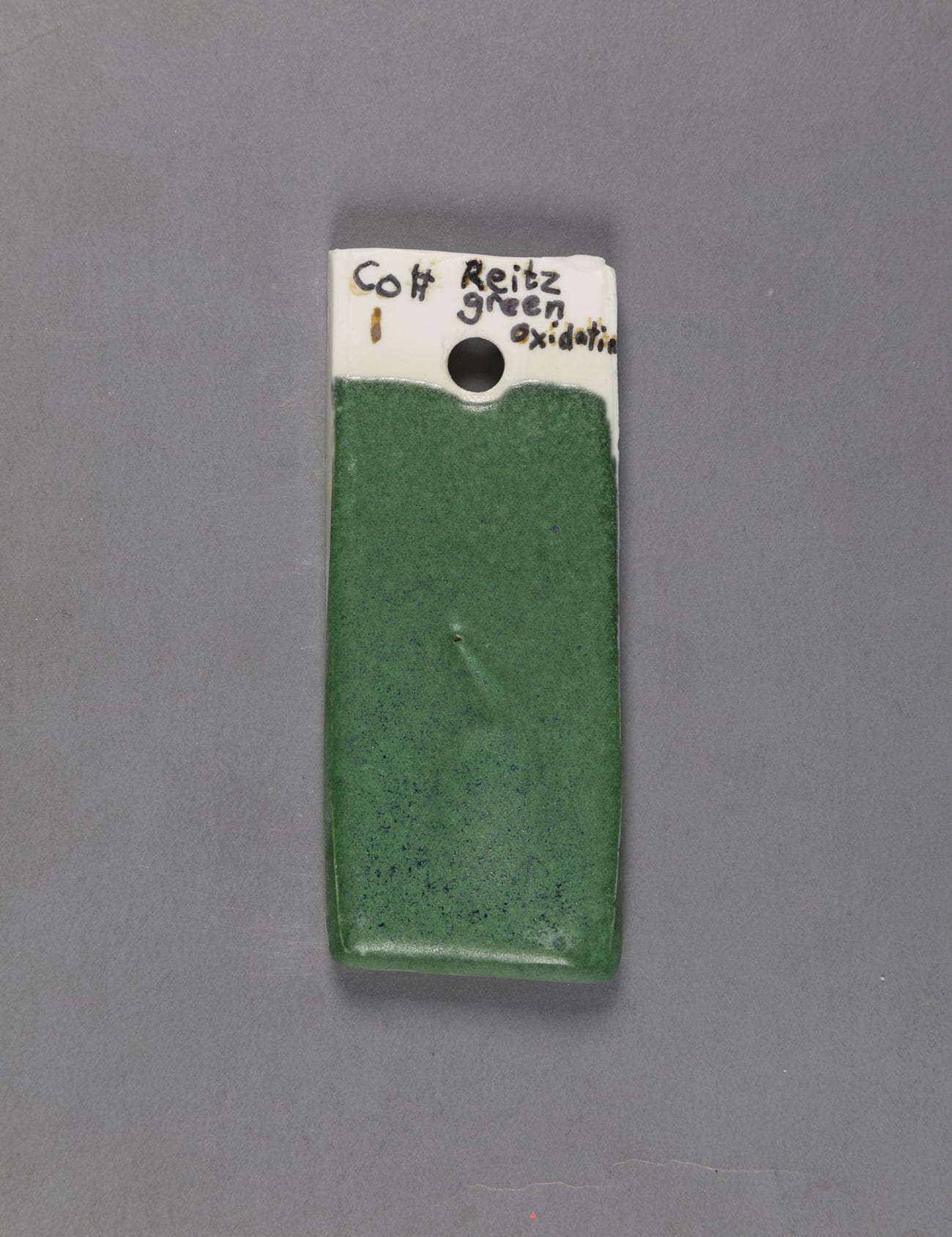


In early 2017 Helen Love was asked by Aberdeen Art Gallery to make a library of ceramic glaze test tiles for the wall of their applied arts section.
In response, Helen challenged herself to make the brightest spectrum possible using 8 common metal oxides and no commercial stains.
There followed a frenzy of glaze testing, 1500 glaze tests to get to the final of nearly 500.

Two versions of this glaze library of test tiles can be viewed in person. One is on the wall of the ceramics workshop at Gray's School of Art where all the glaze tests were mixed in their glaze lab and fired in their kilns.
The other is on display to the public in Gallery 5 “Crafting Colour” of Aberdeen Art Gallery.

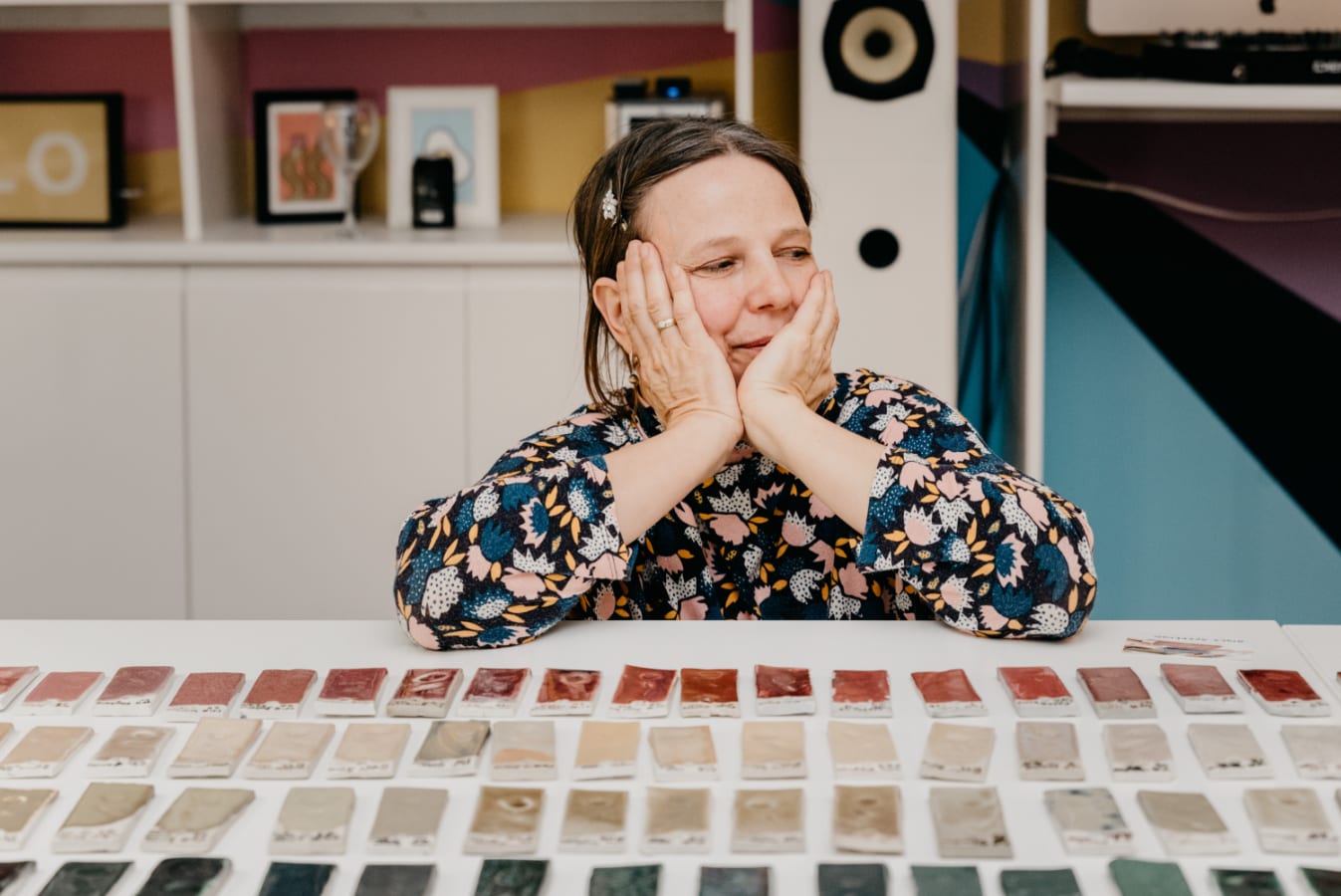
As a ceramic technician working daily with students, Helen saw the potential to use the testing data she recorded for their benefit.
Collaborating with creative agency Design and Code, the data Helen collected over the years was transformed into this digital resource.
Colin Leonard, Founder of Design and Code says “We were thrilled when Helen asked us to collaborate with her on this exciting project. It’s an amazing piece of work, a two-year labour of love! It has been a real joy to form this partnership with Helen and help share her findings with the wider community.”
Hopefully this teaching tool will draw people in to the world of glazing and they will begin to understand the chemistry and experiment themselves.
There are 4 main variables which affect the colour of a glaze. These equate to the filter buttons on this website.
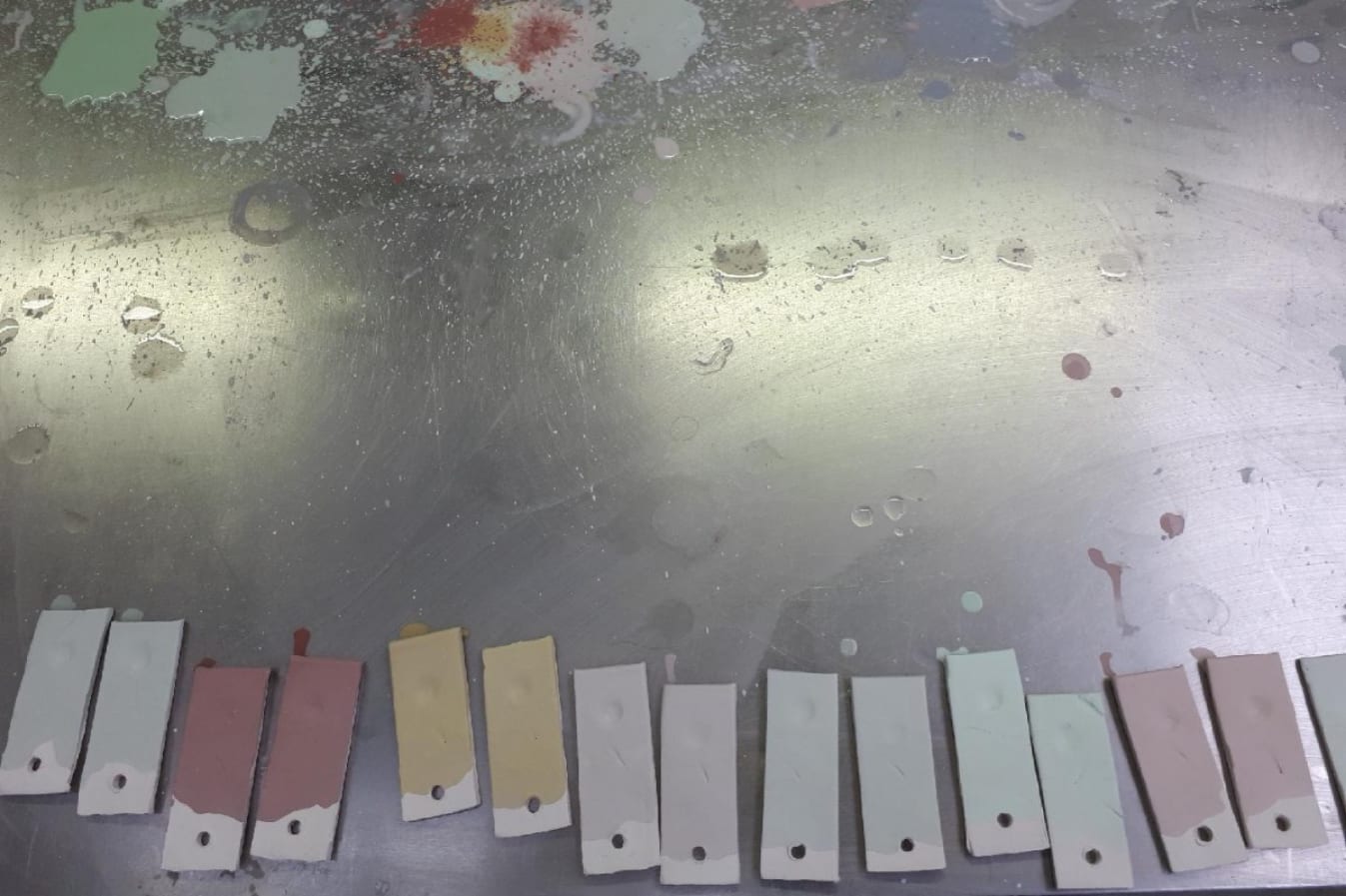
The base glaze
Half of these glaze tests are mixed using one of the 8 base glazes, to which the oxides are added. Different ingredients in the bases enhance different oxides.
The remaining test tiles are glazed using individual recipes, most of which are sourced from the internet. Thank you to the ceramicists who shared them.
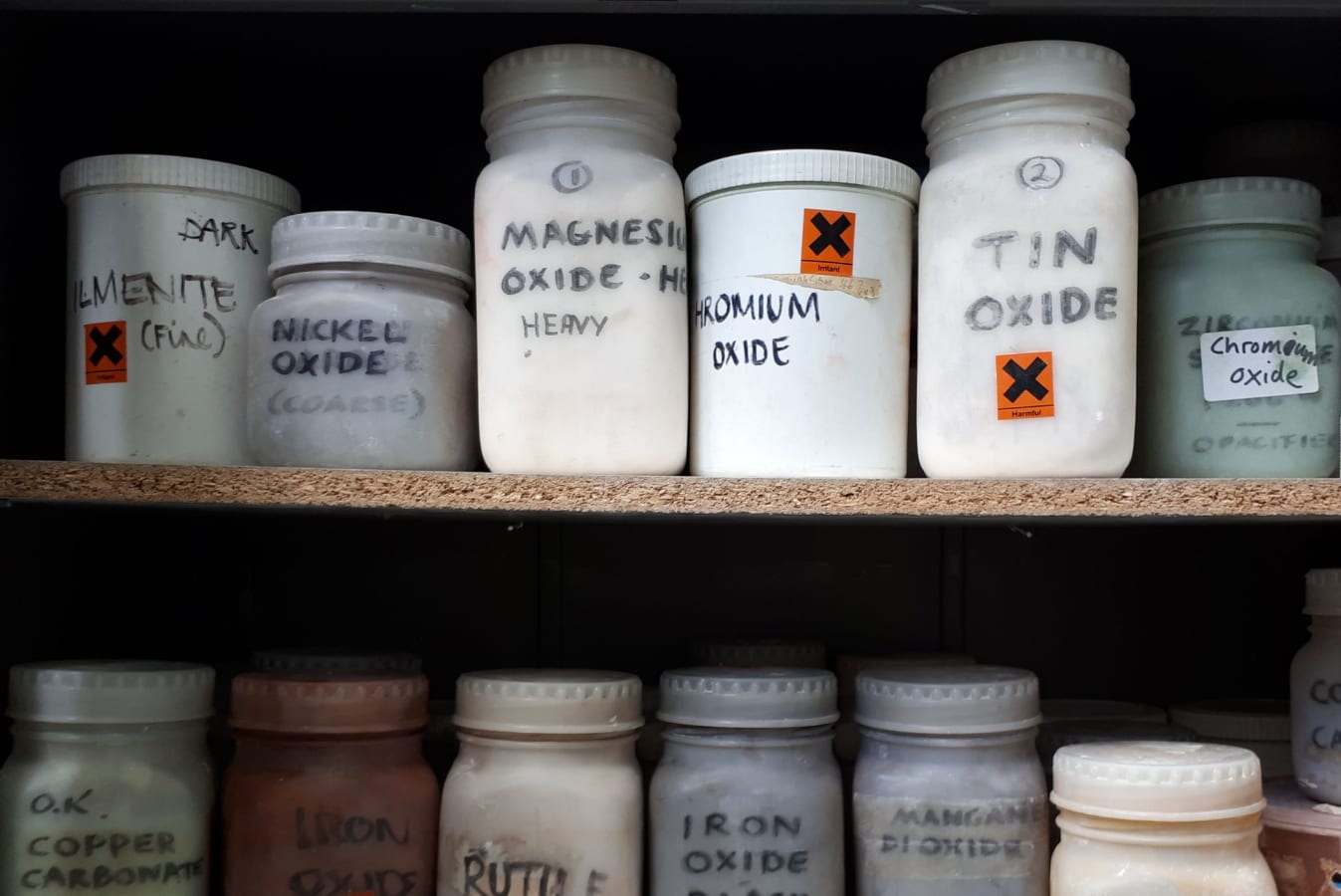
The oxides
Increasing percentages of oxide make incrementally deeper colours (a line blend) or multiple oxides can be added (cross blends). Some combinations of oxide give surprising effects: chromium and tin in the correct proportions make pink, not green as expected.

The clay
The glaze colour is also affected by the colour of clay underneath.
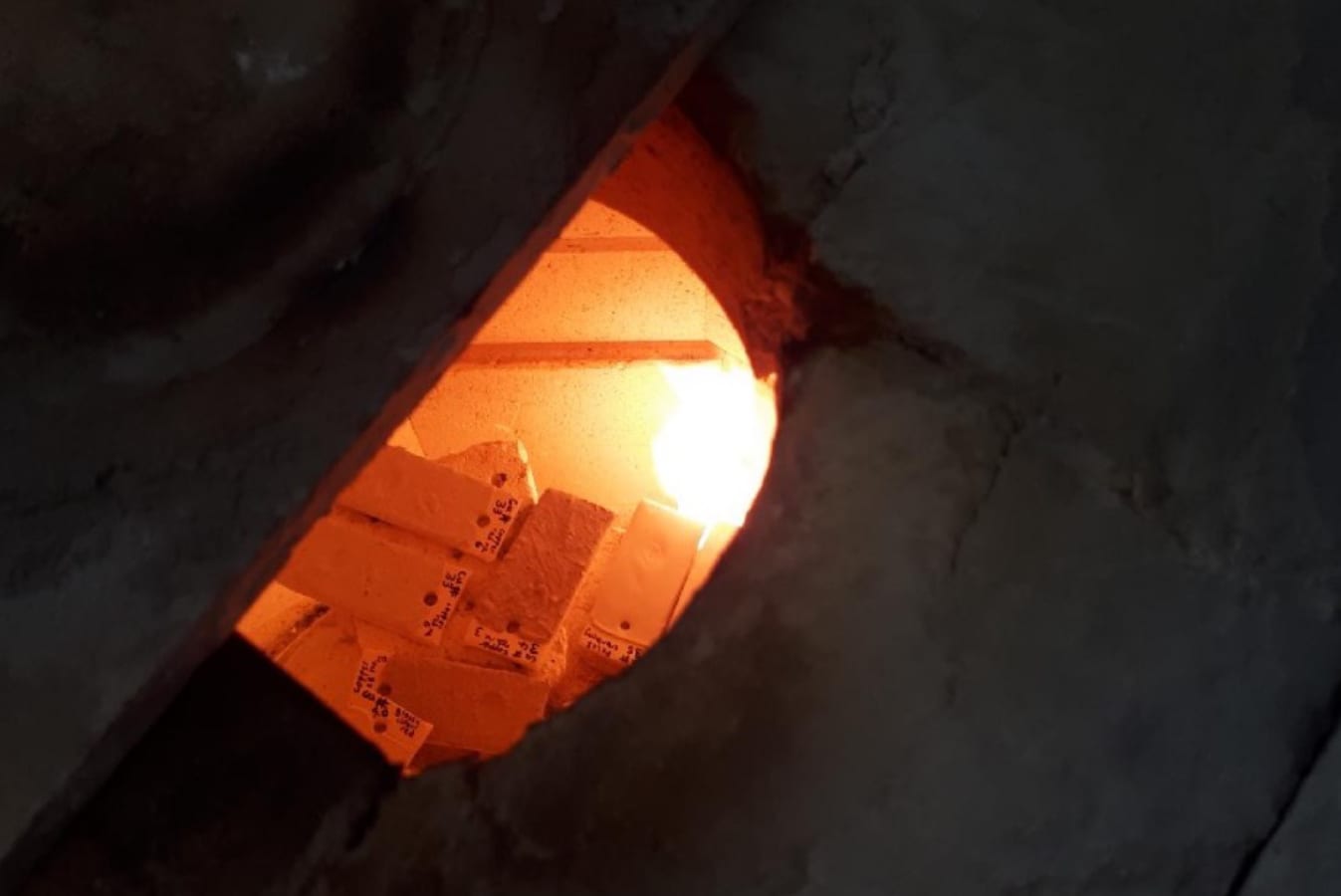
The firing
The firing type or temperature will change the glaze. For example the same copper glaze may be turquoise in an electric kiln (oxidation firing) but red in a gas kiln (reduction firing) because the gas flame steals the oxygen from the copper oxide. Copper oxide is greenish; pure copper is reddish.

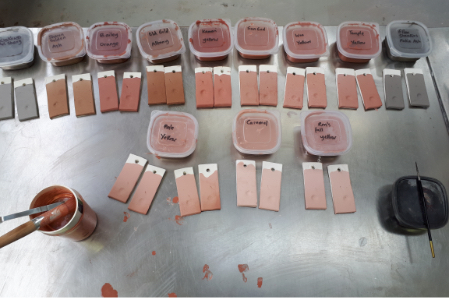
Follow these steps to make approximately 200ml of glaze.
Extra information
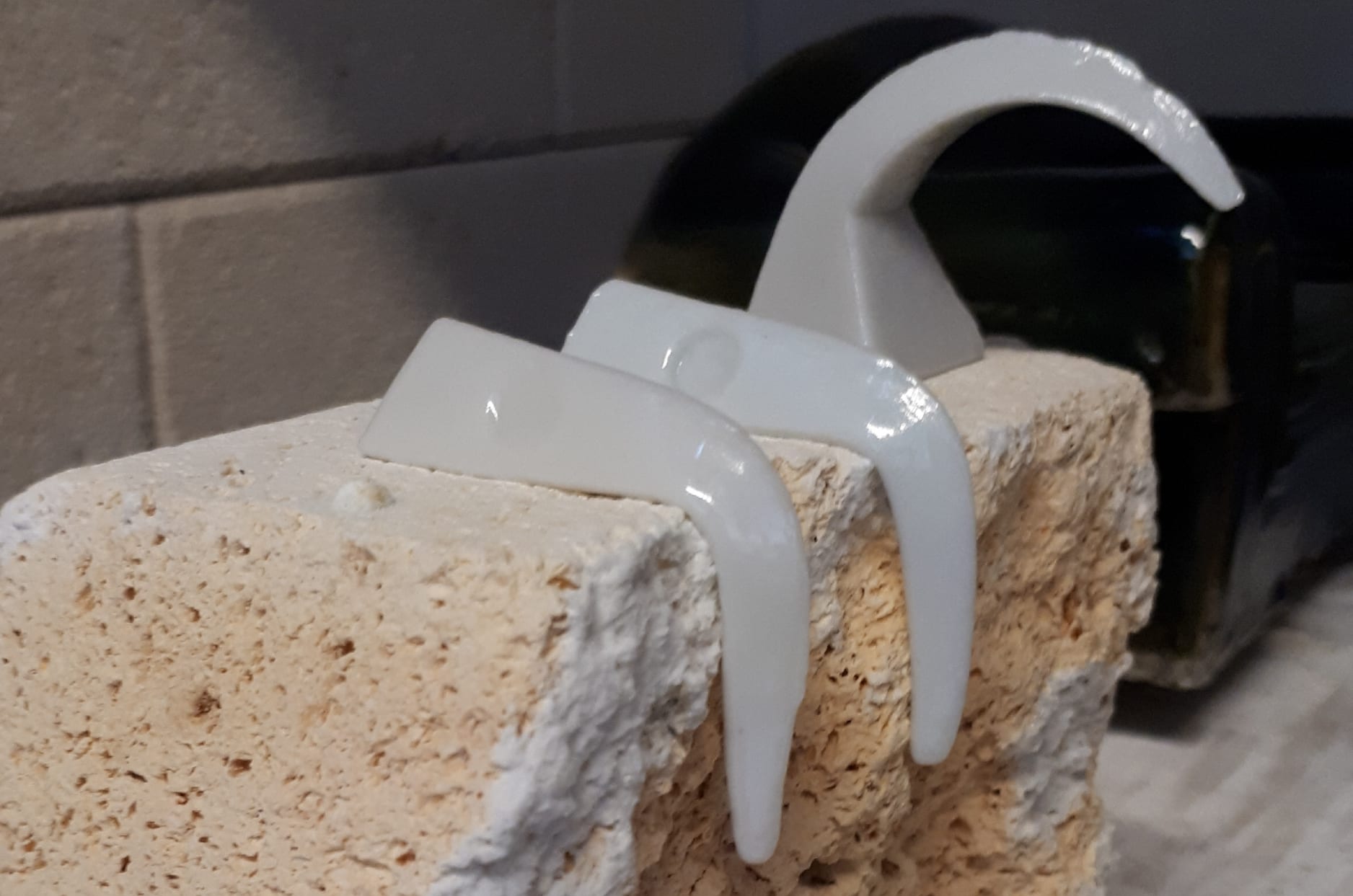
Cone numbers are used in ceramics as a kind of universal shorthand for different firing ranges. Roughly speaking here are the temperatures represented by pyrometric cones.
Each pyrometric cone is made of ceramic material formulated to bend at a specific temperature. However they will react at a lower temperature if the firing is slower, just like the glazes.
| Cone number | ° Celsius | ° Farenheight |
|---|---|---|
| 07 | 980 | 1796 |
| 06 | 1000 | 1832 |
| 04 | 1060 | 1940 |
| 03 | 1100 | 2012 |
| 02 | 1120 | 2048 |
| 4 | 1180 | 2156 |
| 5 | 1200 | 2192 |
| 6 | 1220 | 2228 |
| 7 | 1240 | 2264 |
| 8 | 1260 | 2300 |
| 9 | 1280 | 2336 |

Bisque firing
All tiles except the earthenware ones were bisque fired at 1000C (1832F) before glazing. Earthenware tiles were bisqued at 1190C (2174F).
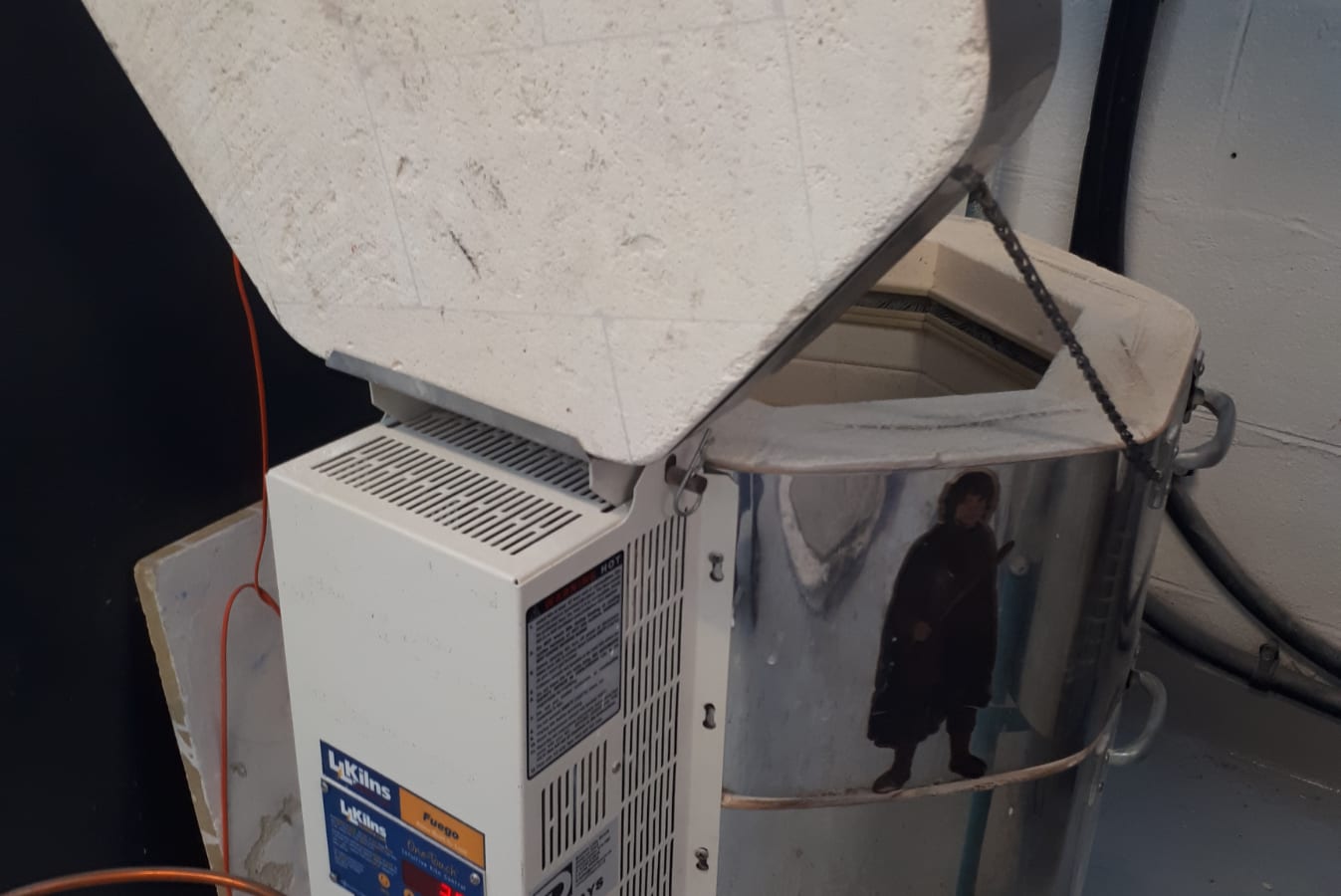
Oxidation firing (Electric kiln)
The usual glaze firing programme used for these tests (unless otherwise mentioned) was:
90C per hour up to 300C (194F/hr. to 572F)
120C per hour up to the top temperature (248F/hr.)
soak for up to 20 minutes but only if the kiln is big and/or very full.
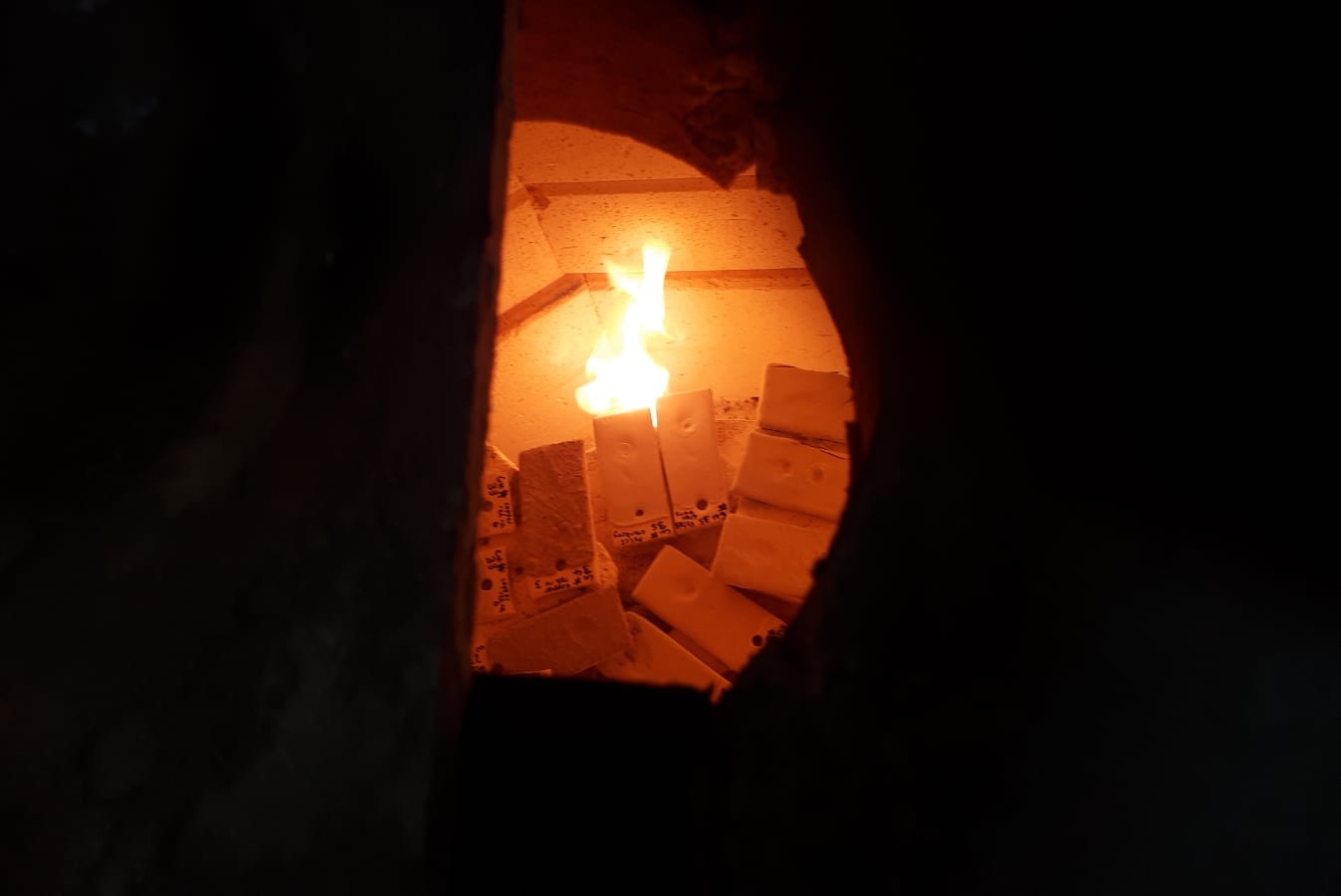
Reduction firing (Gas kiln)
Takes approximately 7 hours.
Warm slowly to start with.
When the kiln reaches 1000C (1833F) reduce the oxygen by partially covering vents until flame shows but not enough to stop the temperature from climbing steadily.
At 1260C (2300F) open the vents and take approximately 20 minutes to bring up to 1280C (2336F) to burn off soot.

Other firings
such as Raku, Crystal/Iron red firing or Shino reduction are explained with each glaze recipe.
All the glaze tests were fired horizontally.
Food safety research was not carried out on the glazes, and a few are certainly not food safe.
Information can be added to each glaze, so any help on this is welcomed. Just email Helen at h.love@rgu.ac.uk
Please visit here, here and here for more information on food safety.
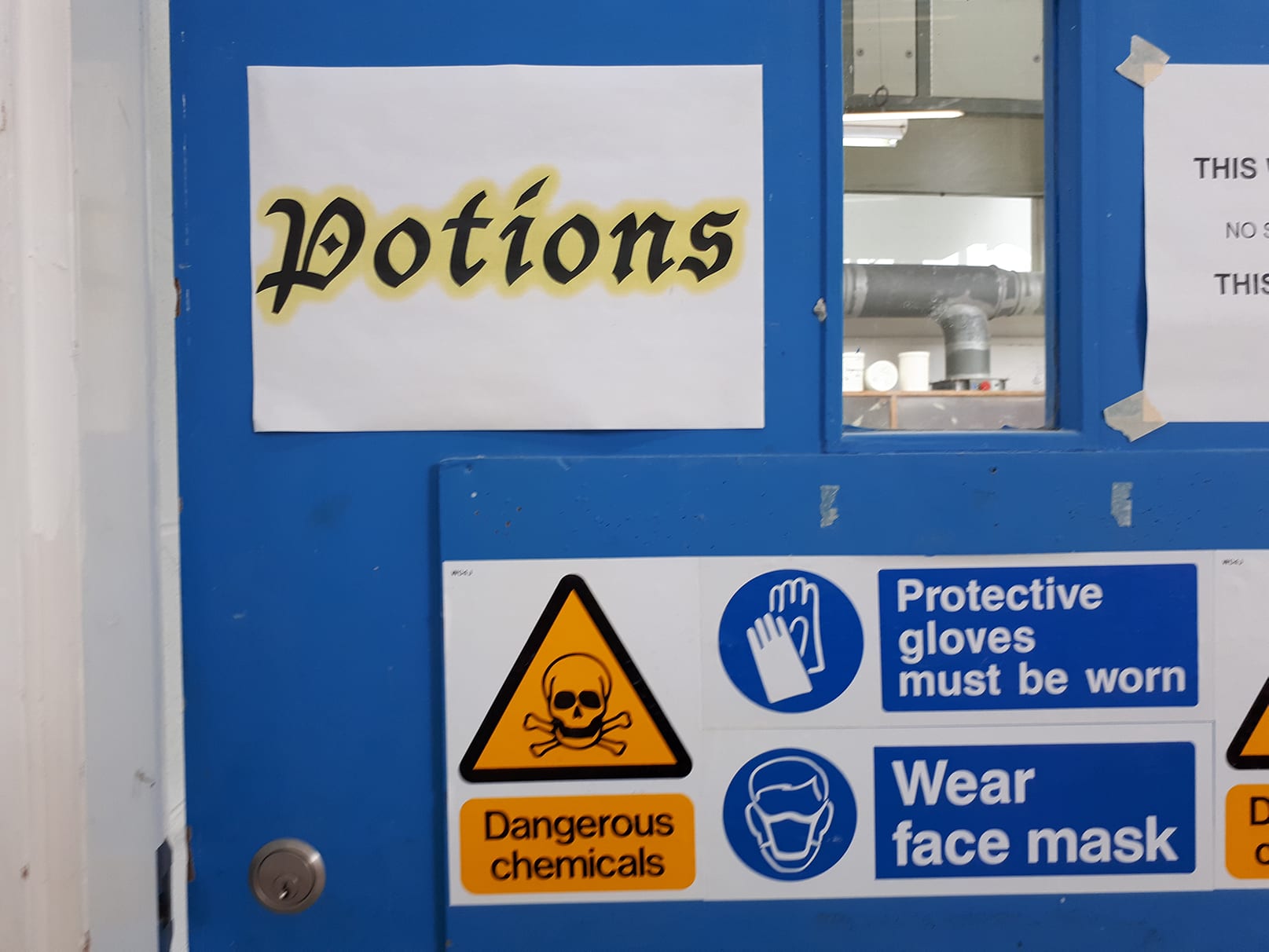
Black is not a colour in the spectrum, but potters sometimes need black so we added these recipes:
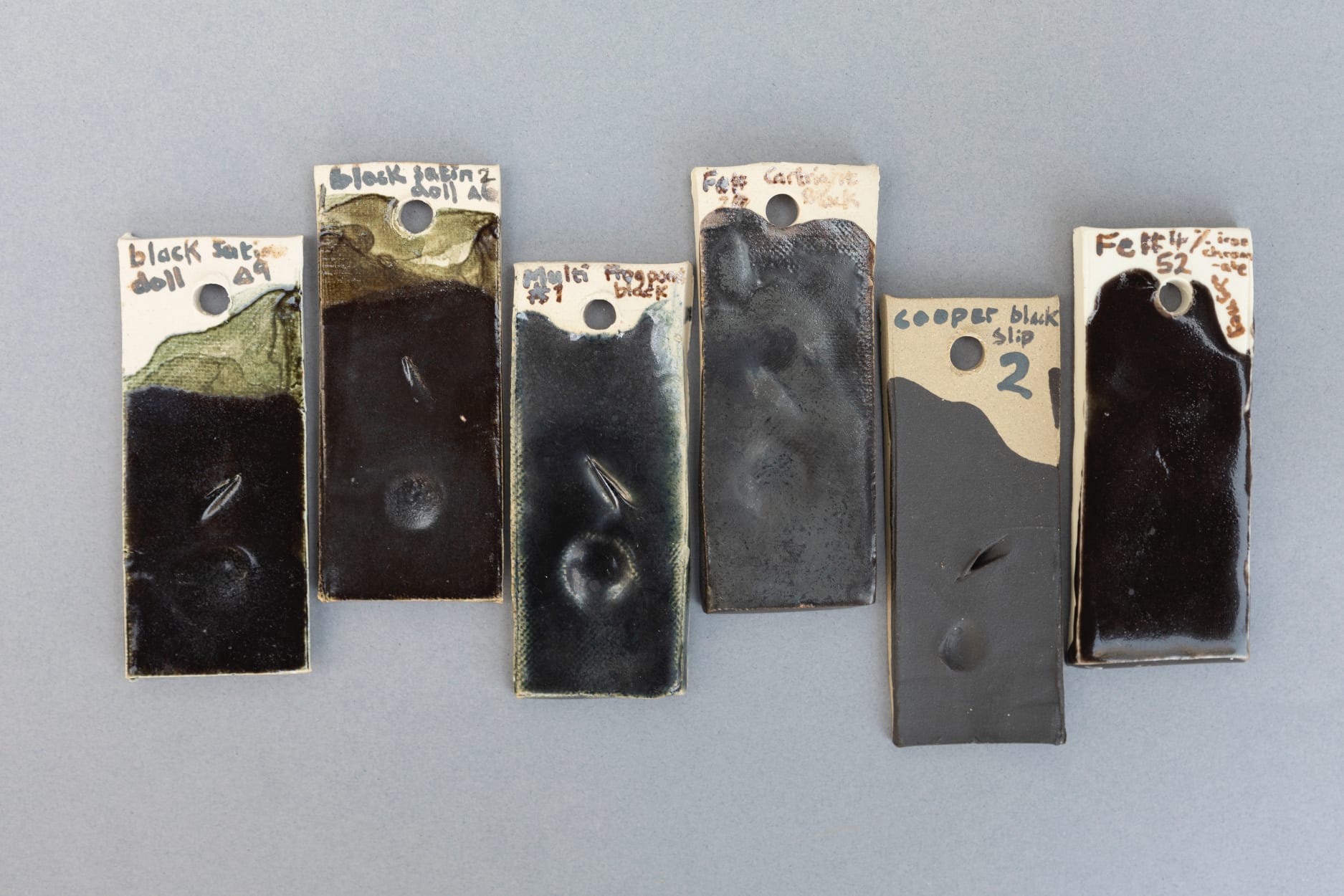
Satin Doll Black
cone 9.5, from Val Cushing
40 alberta slip
15 nepheline syenite
10 barium carbonate
15 talc
10 whiting
10 flint
1 chromium oxide
2 red iron oxide
2 manganese dioxide
2 cobalt carbonate
Satin Doll Black 2
cone 9.5, from Val Cushing
65 alberta slip
15 nepheline syenite
10 barium carbonate
10 talc
5 black iron oxide
1 chromium oxide
2 manganese dioxide
2 cobalt carbonate
Frogpond Metallic Black
cone 6 from www.frogpondpottery.com
78.9 potash feldspar
10.7 calcium borate frit
5.5 whiting
5 china clay
4 copper carbonate
4 manganese dioxide
2 cobalt oxide
Cartwright Black
cone 6
73.5 potash feldspar
10.2 red iron oxide
10 calcium borate frit
5.1 whiting
4.1 china clay
4.1 copper carbonate
2 cobalt carbonate
Love Odyssey Black
cone 6
20 calcium borate frit
10 whiting
30 nepheline syenite
10 china clay
30 flint
4 iron chromate (you can add up to 8 iron chromate)
Cooper Black Slip 2
cone 6
fire on greenware
80 of the body clay you are using
12 red iron oxide
5 manganese dioxide
2 cobalt oxide
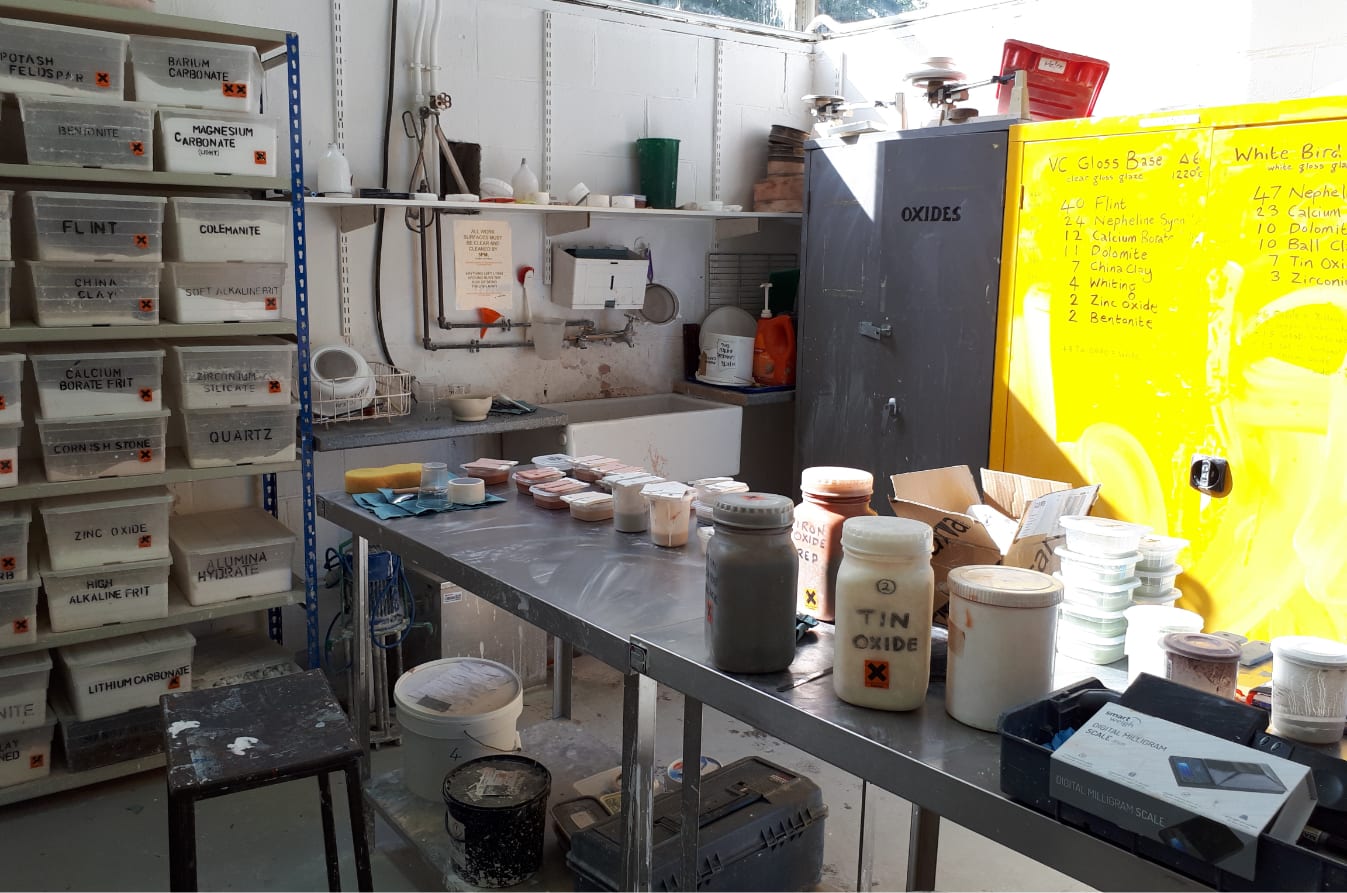
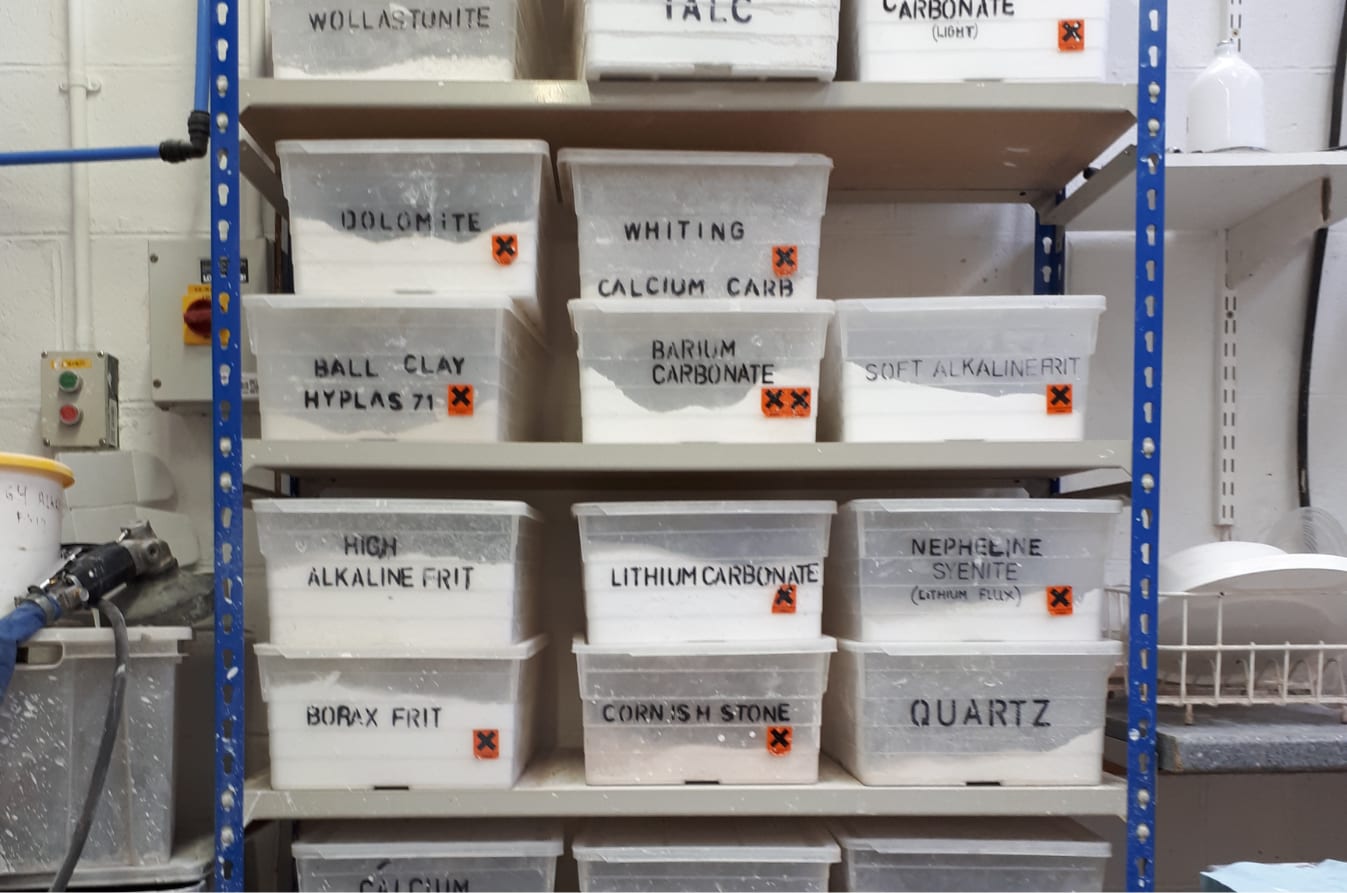
 calcium phosphate
calcium phosphate
 gerstley borate frit
gerstley borate frit
 kaolin
kaolin
 china stone/low iron feldspar
china stone/low iron feldspar
 calcium magnesium carbonate
calcium magnesium carbonate
 magnesium sulphate
magnesium sulphate
 quartz or silica
quartz or silica
 unfired clay
unfired clay
 lithium aluminium silicate/lithium feldspar
lithium aluminium silicate/lithium feldspar
 custer feldspar
custer feldspar
 sodium carbonate
sodium carbonate
 minspar 200/G200 feldspar
minspar 200/G200 feldspar
 lithium feldspar
lithium feldspar
 calcium carbonate
calcium carbonate
 calcium silicate
calcium silicate
 a yellow high iron clay
a yellow high iron clay
 zircopax
zircopax
 naturally occurring titanium dioxide, contaminated with other minerals like iron
naturally occurring titanium dioxide, contaminated with other minerals like iron
For more information on materials and substitutes search here.
The colour of the tiles in the photography had to be absolutely true or there was no point in having them at all.
The photos were taken using a copystand with daylight bulbs and then each photo was compared to the actual test tile and adjusted in Photoshop, "a bit more blue, a bit more purple!", until the colour was true to life.
Thanks to Fergus Connor and Naomi Christie for all their help with the photos.

In order to drum up support and awareness of the project we hosted the ‘Show Some Love’ event in Design and Code's studio. Thanks to everyone who attended.
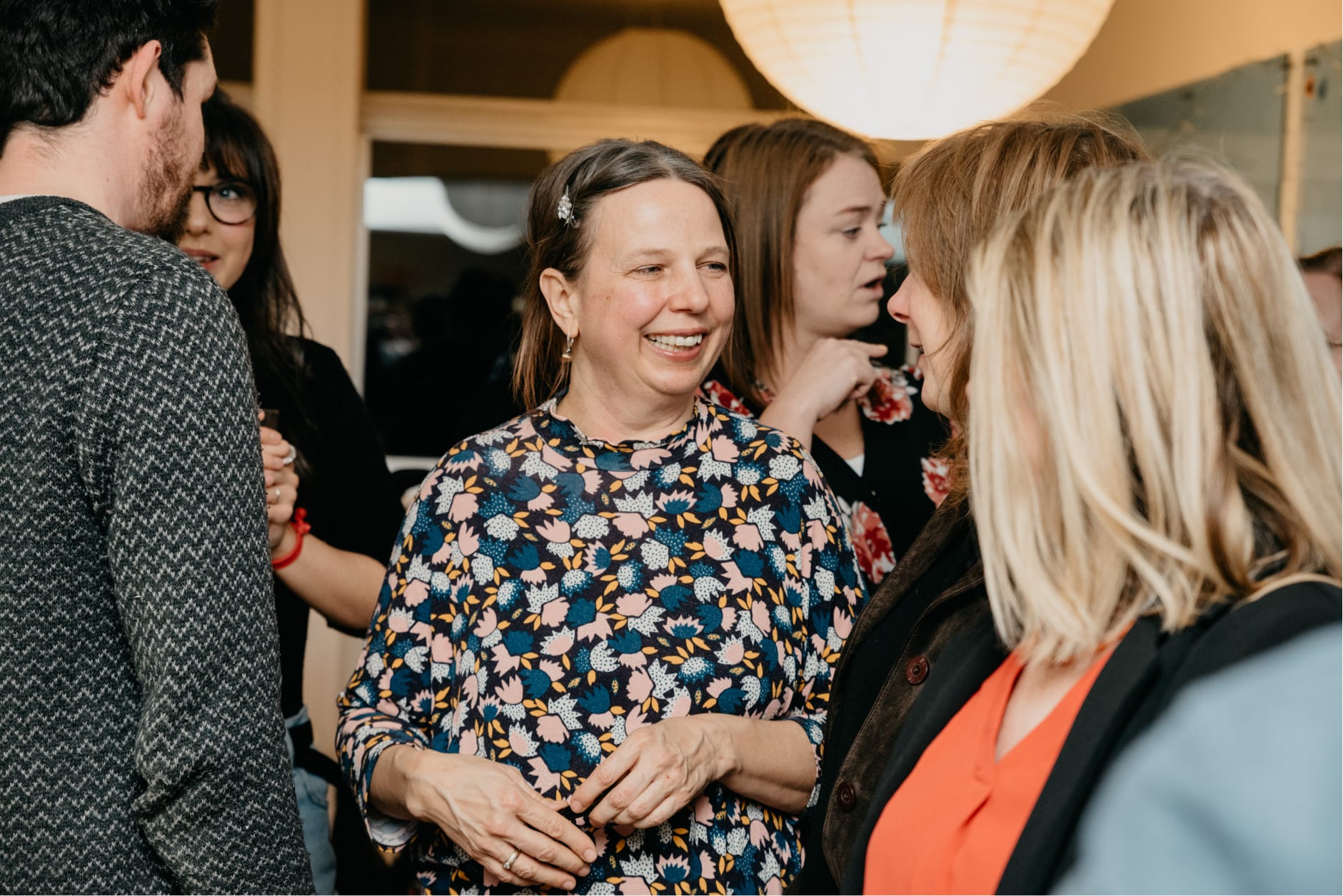
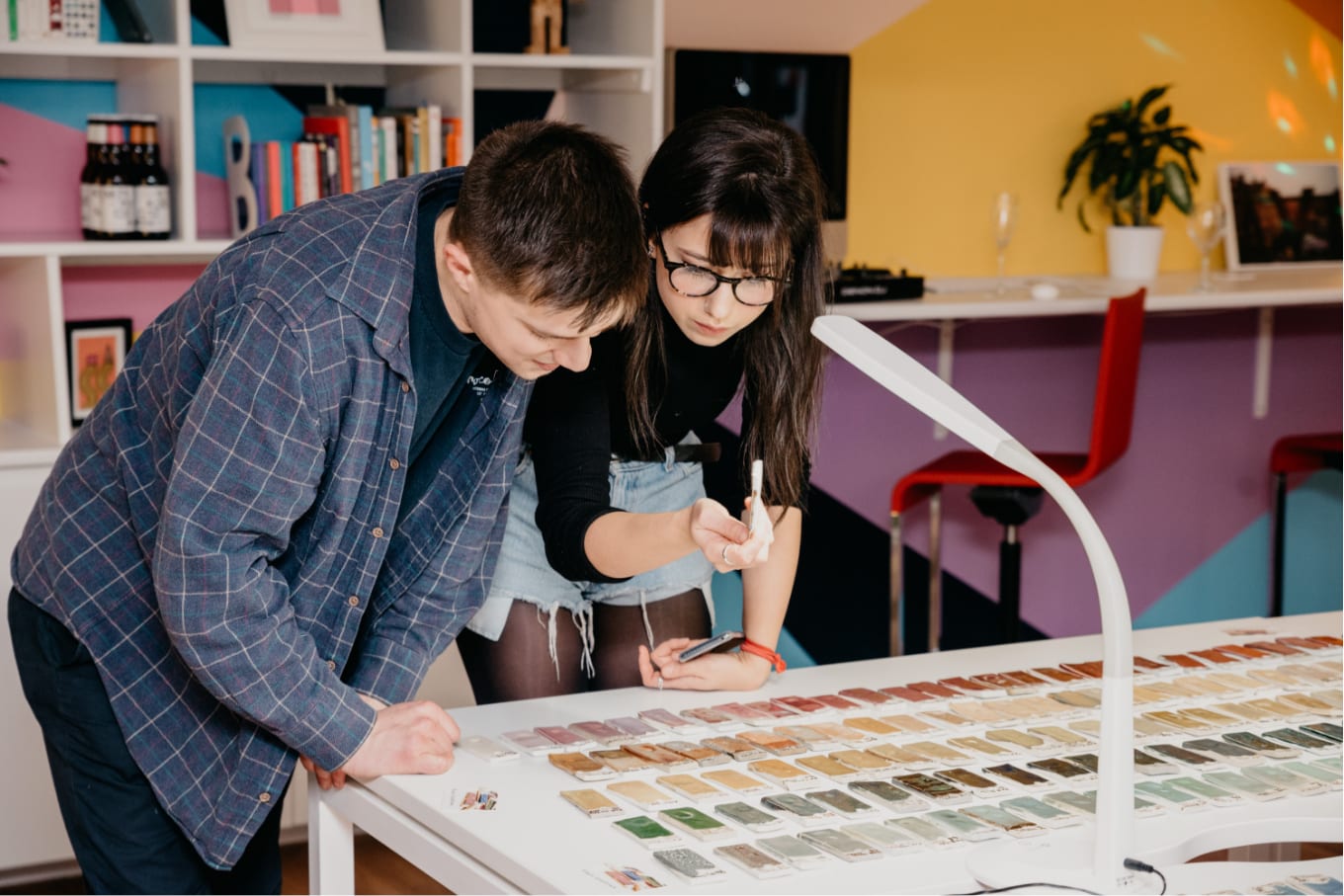
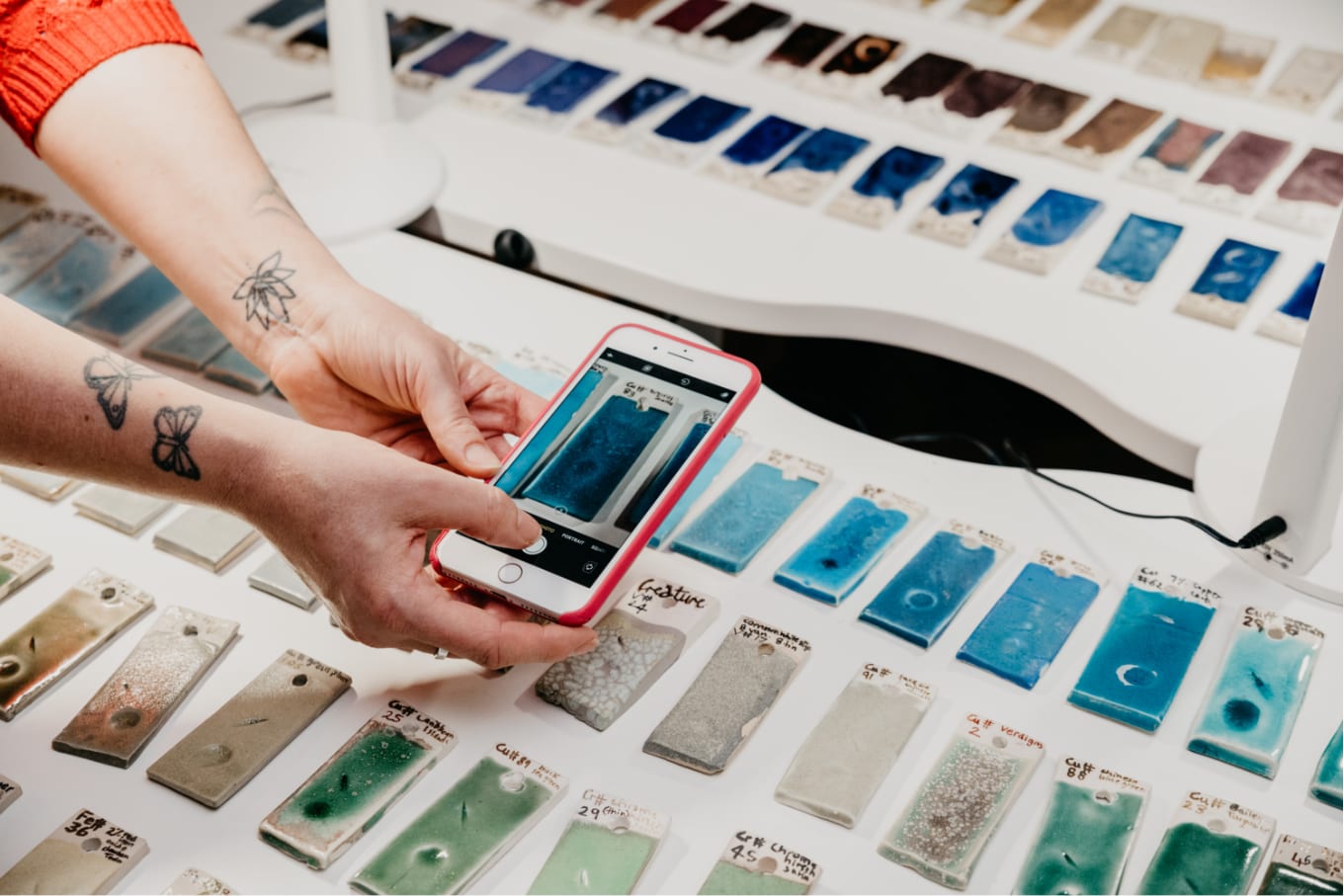
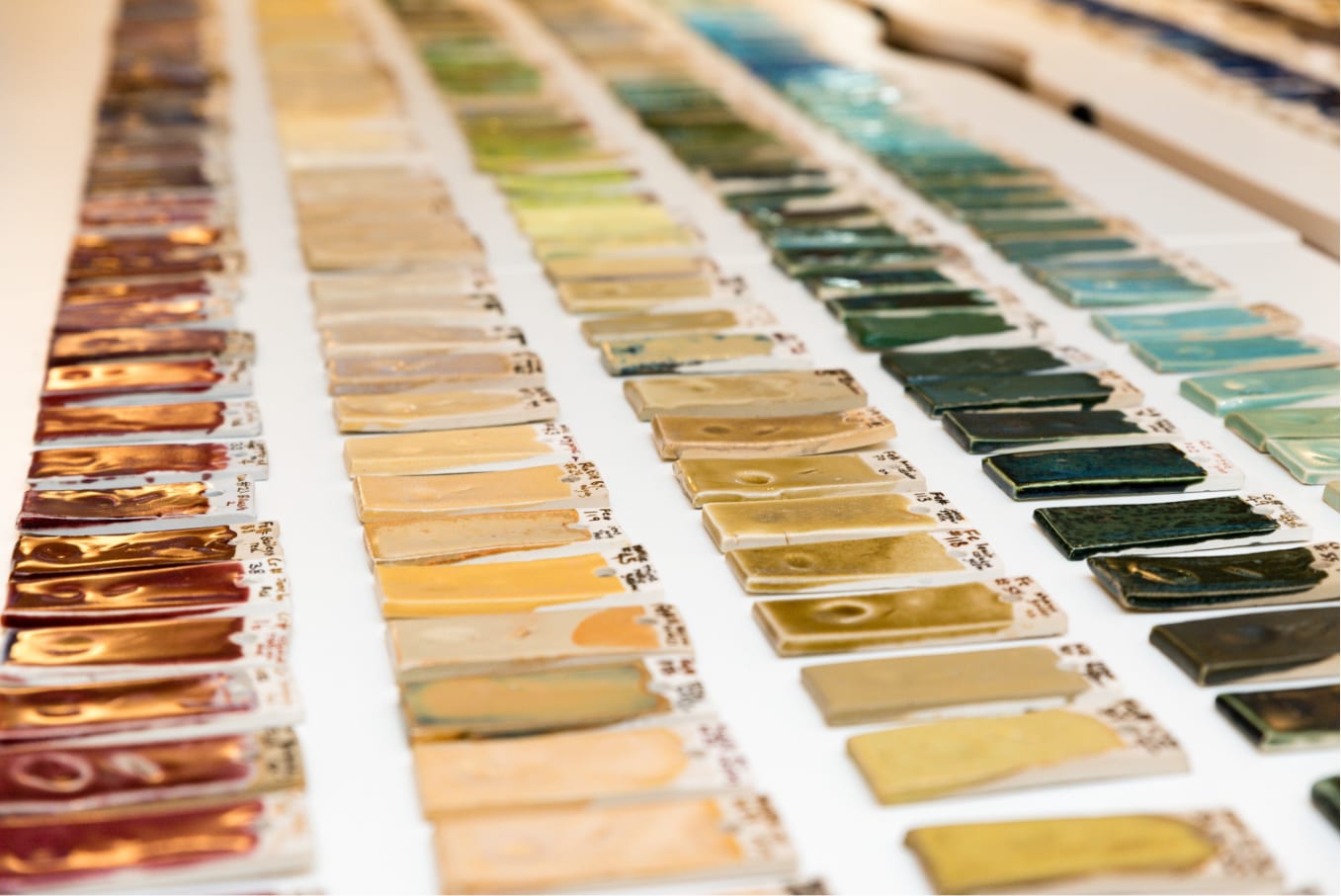

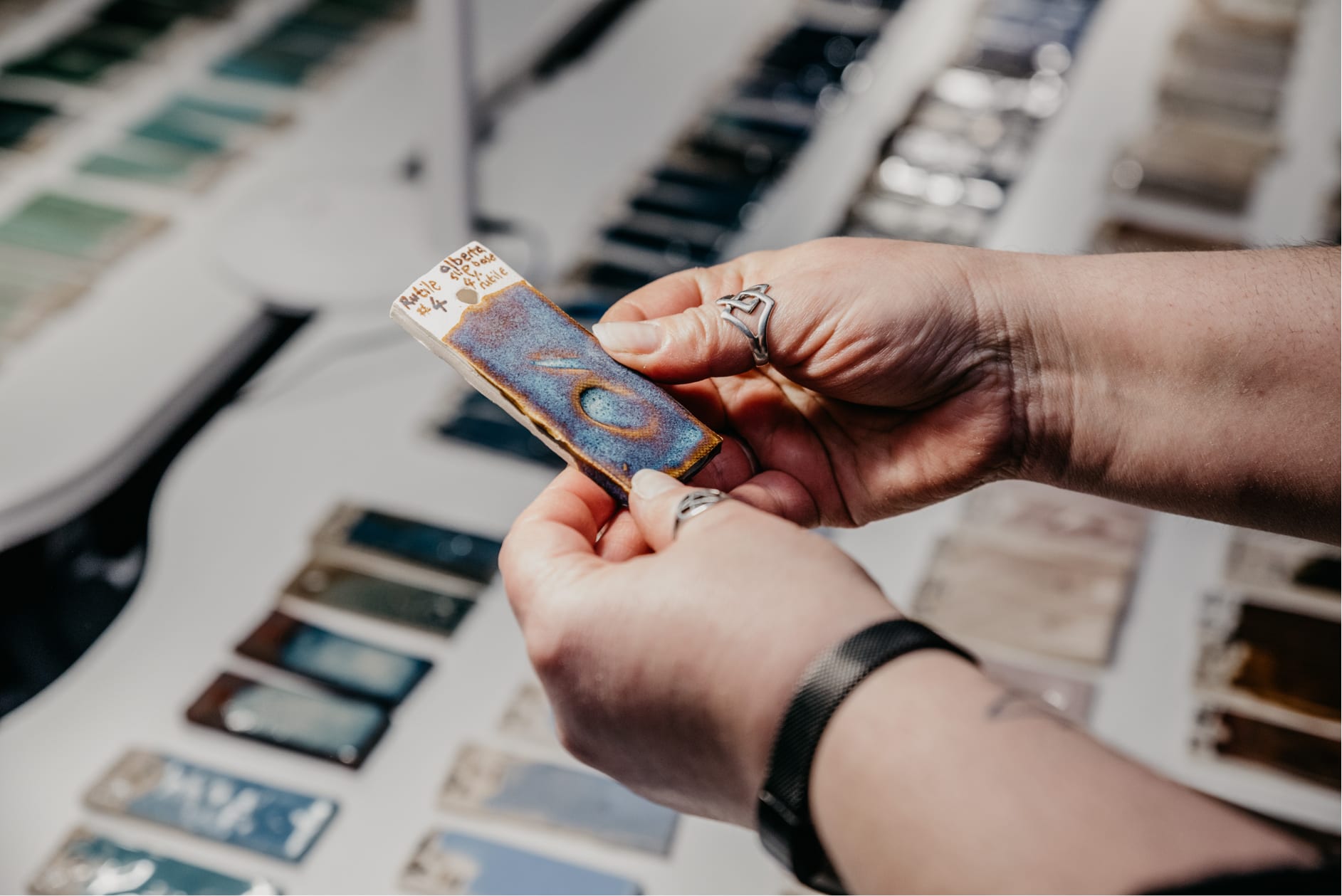
We are enormously grateful to the individuals who have generously supported Glaze Spectrum:
Adam Hoyle, Aimee Morris, Alexis Budd, Alison Duncan, Alison Grubb, Amy Lawson, Anita Varga, An Gielis, Ann Capewell, Bev Rowe, Bodil Partridge, Bryan Johnson, Bryan Thomson, Colin Florance, Daniel Sutherland, David Slade, Diana Fallowes, Diana Sykes, Elizabeth Degenszejn, Elizabeth Furrie, Ellen Fox, Elspeth Winram, Ewan Sinclair, Fiona Booys and Citylit Ceramics Diploma, Genevieve Davis, Gerald Buchanan, Hamish Stewart, Hilary Nicol, Jane Barclay, Jane Cairns, Jude Barber, Judith Williams, Katy Farago, Kelly Cairns, Kirsty Collins, Kristina Aburrow, Kristine Partridge, Mairi Macleod Gray, Maribel Femenia Vinao, Mary Watson, Mel Colquhoun, Mick MacNeill, Mikael Reid, Miranda Clayton, Natasha Riddoch, Nelly Harris, Neil Cobban, Nick Beavon, Nicola Furrie Murphy, Pat Short, Steve Hay, Steven Draper, Tess Day, and Teresa Munby.
Thanks also to the donors who wish to remain anonymous, the students at Gray’s School of Art who helped with all the testing, Robert Gordon University for glaze firings in kind and Potclays for their donation of glaze materials.
If you'd like to contribute to this project, the
A massive thanks to the following for featuring Glaze Spectrum in their publications, articles, magazines and social media.
ArtNorth magazine
Ceramic Review
Potclays Ltd
Blue Matchbox
Scottish Potters
Instagram
Feel free to share photos of your glazes and notes on the results on social media.
Each tile has a unique hashtag (for example Vanadium 25 is #glazespectrumV25), which you can easily copy to the clipboard and paste before you post.
You can also search for specific hashtags to see how ceramicists may have posted their results and experiences of using that glaze.